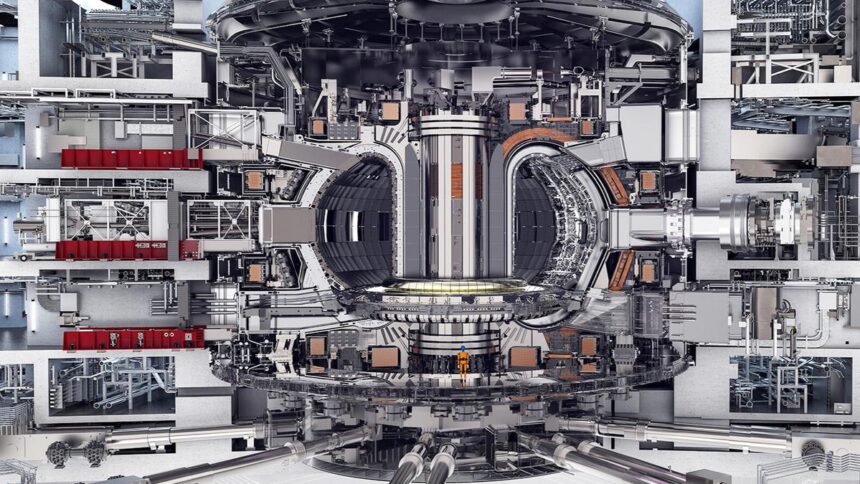In a major milestone, scientists working on the world’s largest nuclear fusion project have completed its main magnet system, with India playing a key role in building critical infrastructure. This system will power the core of ITER (International Thermonuclear Experimental Reactor) Tokamak reactor, aiming to demonstrate that fusion, the energy source of the sun and stars, can be used as a safe and carbon-free power source on Earth. Unlike nuclear fission, which splits atoms and produces radioactive waste, fusion involves heating hydrogen gas to extremely high temperatures until the atoms fuse, releasing large amounts of energy sans nuclear waste. India is among the seven main members of the project and has played a key role in building some of its most critical infrastructure, including the massive cryostat cooling systems and heating technologies. The final part of the magnet system was the sixth module of the Central Solenoid, the main magnet that will drive plasma, the superhot gas in which fusion reactions take place, in the reactor. Built and tested in the United States, this powerful magnet will soon be assembled at the ITER site in southern France. When complete, it will be strong enough to lift an aircraft carrier and form the electromagnetic heart of the doughnut-shaped fusion machine. ITER, which stands for International Thermonuclear Experimental Reactor, is a joint scientific effort of more than 30 countries, including India, China, the US, Russia, Japan, South Korea and members of the European Union. The goal is to prove that fusion energy can be produced at an industrial scale. The magnet system just completed is critical to creating and controlling the ultra-hot plasma inside the reactor. At full power, ITER is expected to produce 500 megawatts of energy from just 50 megawatts of input. This would make the plasma self-sustaining, a state known as “burning plasma”, which scientists see as key to unlocking fusion energy. India has designed and manufactured the cryostat, an enormous 30-metre tall and 30-metre wide chamber that houses the entire ITER Tokamak. India has also built the cryolines that carry liquid helium to cool the magnets to minus 269 degrees Celsius, the temperature needed for superconductivity. It has also delivered the reactor’s in-wall shielding, cooling water systems and key parts of the heating systems that will raise the temperature of the plasma to over 150 million degrees Celsius, 10 times hotter than the Sun’s core. Scientists say that if successful, fusion could offer the world a nearly limitless and clean energy source without the long-lived radioactive waste or carbon emissions of current technologies. Thousands of scientists and engineers from member countries have contributed components from hundreds of factories on three continents to build a single machine. ITER Director-General Pietro Barabaschi said, “What makes ITER unique is not only its technical complexity but the framework of international cooperation that has sustained it through changing political landscapes.” “The ITER Project is the embodiment of hope. With ITER, we show that a sustainable energy future and a peaceful path forward are possible,” he said. With more than 10,000 tonnes of superconducting magnets, made from over 1,00,000 kilometres of special wire, ITER represents a global effort to push the boundaries of science and energy technology. In 2025, ITER completed the insertion of the first vacuum vessel module into the reactor pit three weeks ahead of schedule. The rest of the components, contributed by different countries, are being assembled piece by piece in what is described as one of the most complex engineering projects ever attempted. Private companies are also getting involved. In recent years, there has been a growing interest and investments from the private sector in fusion research. ITER has launched new programmes to share knowledge and research data with private players to speed up innovation and development of future fusion reactors. Under the current plans, ITER will not produce electricity itself but will serve as a large research facility to test the fusion process at scale. The data generated is expected to help build future commercial fusion power plants. As the host of the project, Europe is bearing 45 per cent of the construction cost. The other six members — India, China, Japan, South Korea, Russia and the US — are each contributing about 9 per cent. But all members will get full access to the research results and patents.
Reference : https://www.thehindu.com/sci-tech/science/worlds-largest-fusion-project-reaches-construction-milestone-with-indias-help/article69521130.ece








